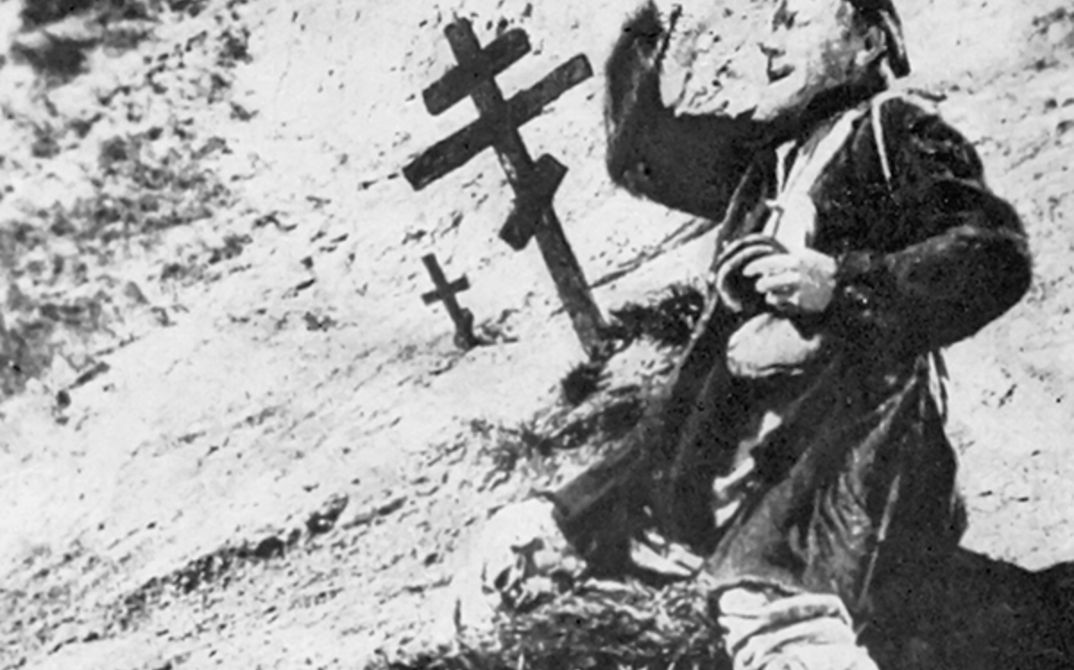35 mm, 77 min. Russian intertitles.
In one of the last silent films to be produced in the Soviet Union, Alexandr Medvedkin tells the story of a peasant’s quest for happiness: this odyssey of a small man begins when his father dies while trying to steal his wealthy neighbour’s dumplings. After a promising beginning, he must stand his ground against greedy clergymen, corrupt helpers of the tsar and even his own lazy horse. Medvedkin dedicated this film to "the last lazybones of the collective farm", sketching out this man’s journey to the collective as a series of exaggerated, slapstick missteps which can only lead to one realisation: the old system must be abolished and a new one must be created. The film did not attract much attention in the West until the 1960s, thanks in part to Chris Marker, who used excerpts from it in his film Le tombeau d'Alexandre (1993). (ab)
Alexandr Medvedkin was born in 1900 in Penza, Russian Empire (current Russia). He attended an engineering school before fighting for the Red Army as a volunteer in 1919. A year later, he became a member of the Communist Party. In 1927, Medwedkin turned to film, starting out by directing military educational films at the State Military Film Studio Gosvoenkino. In the 1930s, he began making experimental satirical short films. In 1931, Medvedkin started working on the project ‘Cinetrain', in which he equipped a train with a cutting room, a laboratory to develop film and screening facilities. Until 1935, Medvedkin's team travelled the country with this mobile cinema, in order to critically document the working conditions in big industry and to present the filmic results to the workers on site and to stimulate discussion. Medvedkin's film work was rediscovered in the late 1960s. In 1973, Chris Marker focused on Medvedkin's ‘Cinetrain’ in his documentary LE TRAIN EN MARCHE. Alexandr Medvedkin died in Moscow in 1989.
